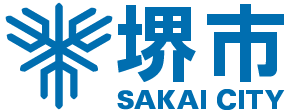Rugs
Rugs: Sakai Hand-woven dantsu and Rugs
Traditional rug culture moves from hand- to machine-weaving
Sakai's hand-woven dantsu rugs fascinate the West during the Meiji period

It is said that Sakai hand-woven dantsu rugs can be traced back to products manufactured and sold by a textile merchant in the middle of the Edo period. When they were introduced to the West during the Meiji period, production volume quickly soared, and the rugs became one of Japan's most important exports. Although the manufacture of dantsu rugs later fell into decline as the number of craftsmen capable of their manufacture decreased, machine-woven rugs have made a comeback in recent years and today remain an important Sakai industry.
The spirit of the Sakai dantsu craftsman lives on in rug culture

In general terms, the production of rugs consists of five steps: making the pattern card (design picture), selecting the yarn, weaving the rug, inspecting the fabric (to ensure the absence of flaws and fraying), and finishing (gluing the back and trimming the yarn on the front so that it looks attractive). Design cards that were drawn by hand 15 years ago are today designed with computers, and the weaving and finishing steps have also been mechanized, enabling complex patterns to be created quickly. However, the selection of the yarn, which determines the texture of the final product, and the inspection process, which ensures the beauty of the final product, both depend on the skills of specialized workers. The colorful rugs created in this way grace private houses, hotel lobbies, and banquet halls across Japan. The dantsu rugs that had their beginnings during the Tenpo era have become Sakai's new rug culture, and the spirit of Sakai's dantsu craftsmen has been handed down from generation to generation and remains alive today.
Example of the dantsu manufacturing process (machine-weaving)
(1)Once the design has been finalized, yarn is ordered. Workers look forward to the weaving process as the yarn is finished to meet the color and texture specifications laid out in the order.
(2)Each color of yarn is wound onto a bobbin and connected to the machine as the previous color is finished. In a 3.64-meter wide rug, about 1,140 warp threads are used for each color.
(3)The machine can wave 2 meters each hour for an average of 16 meters per day.
(4)During the inspection stage, workers check the quality of the entire woven surface. If they find any flaws in the weave, they use a hook to pull out the yarn and repair the spot using a yarn needle.
